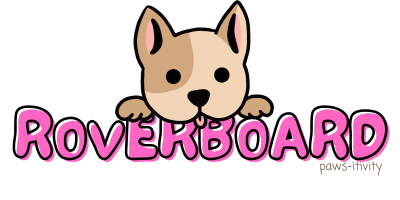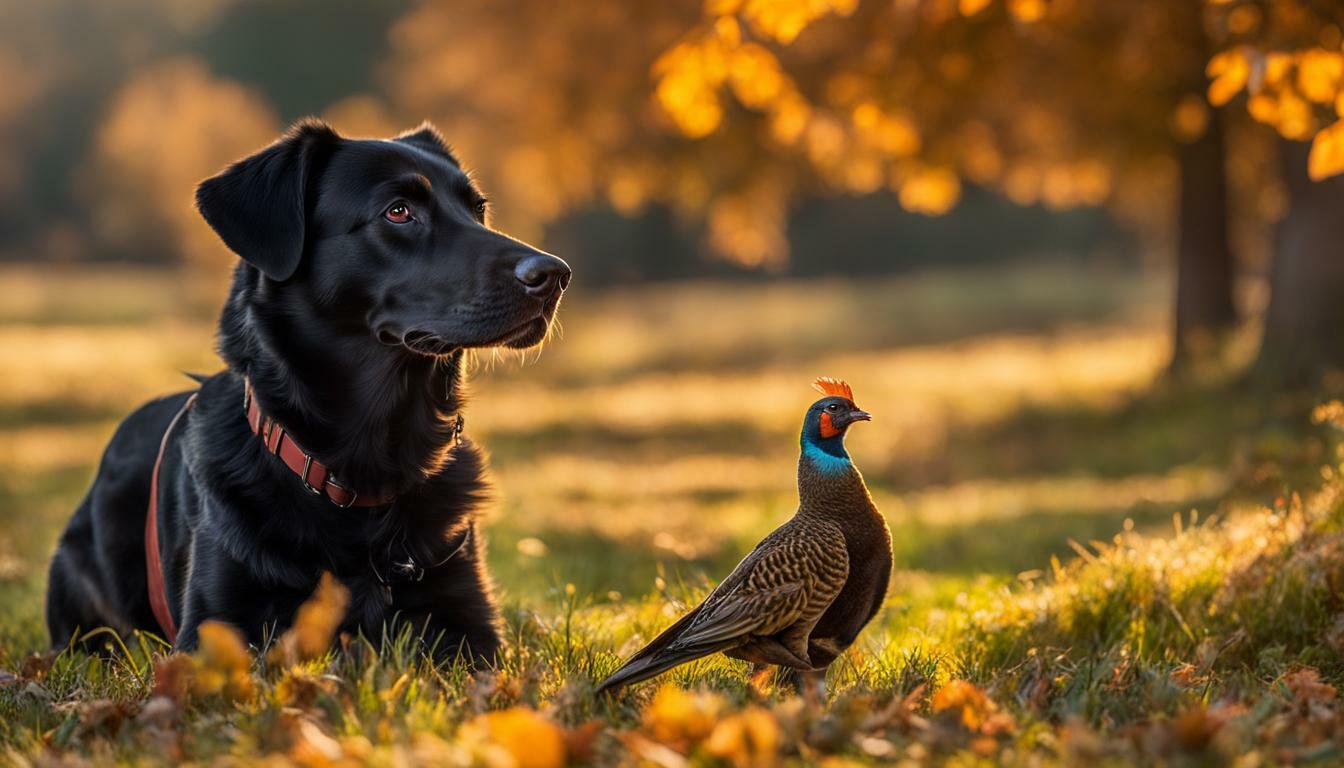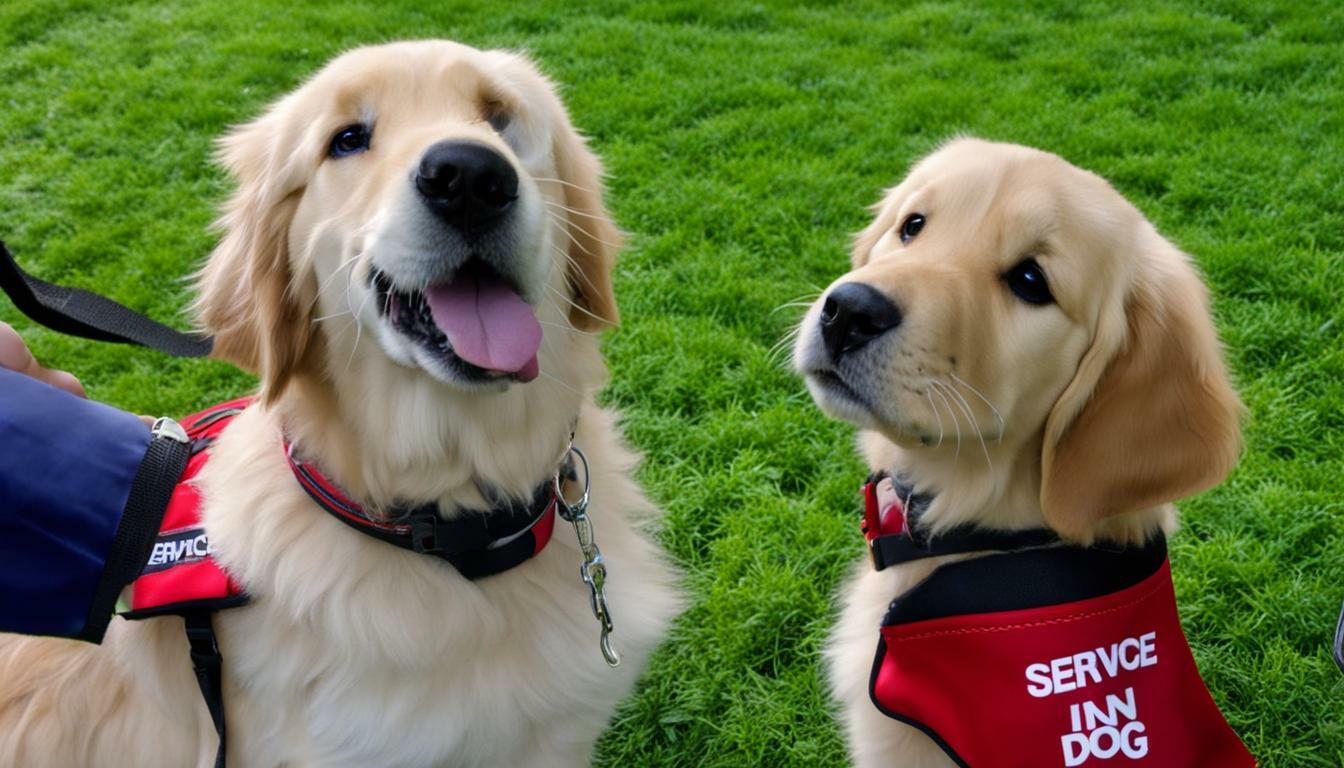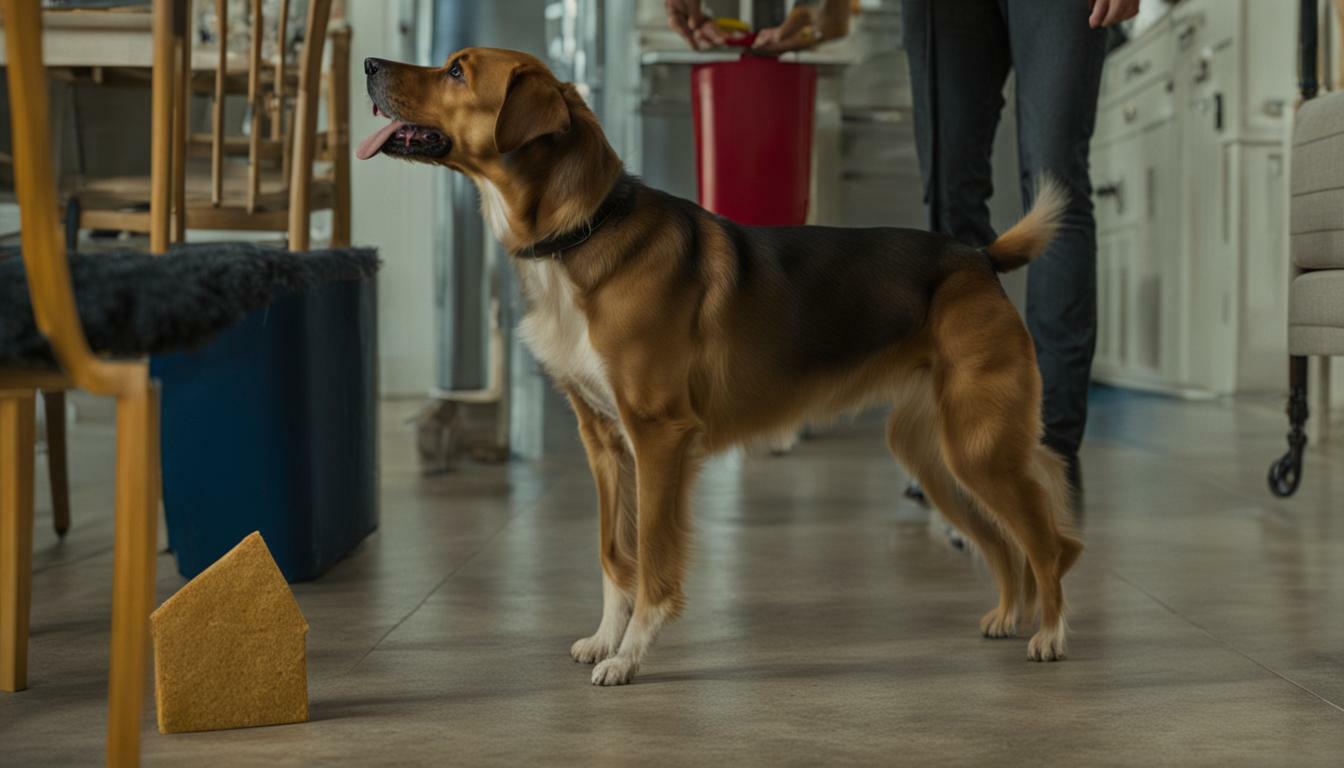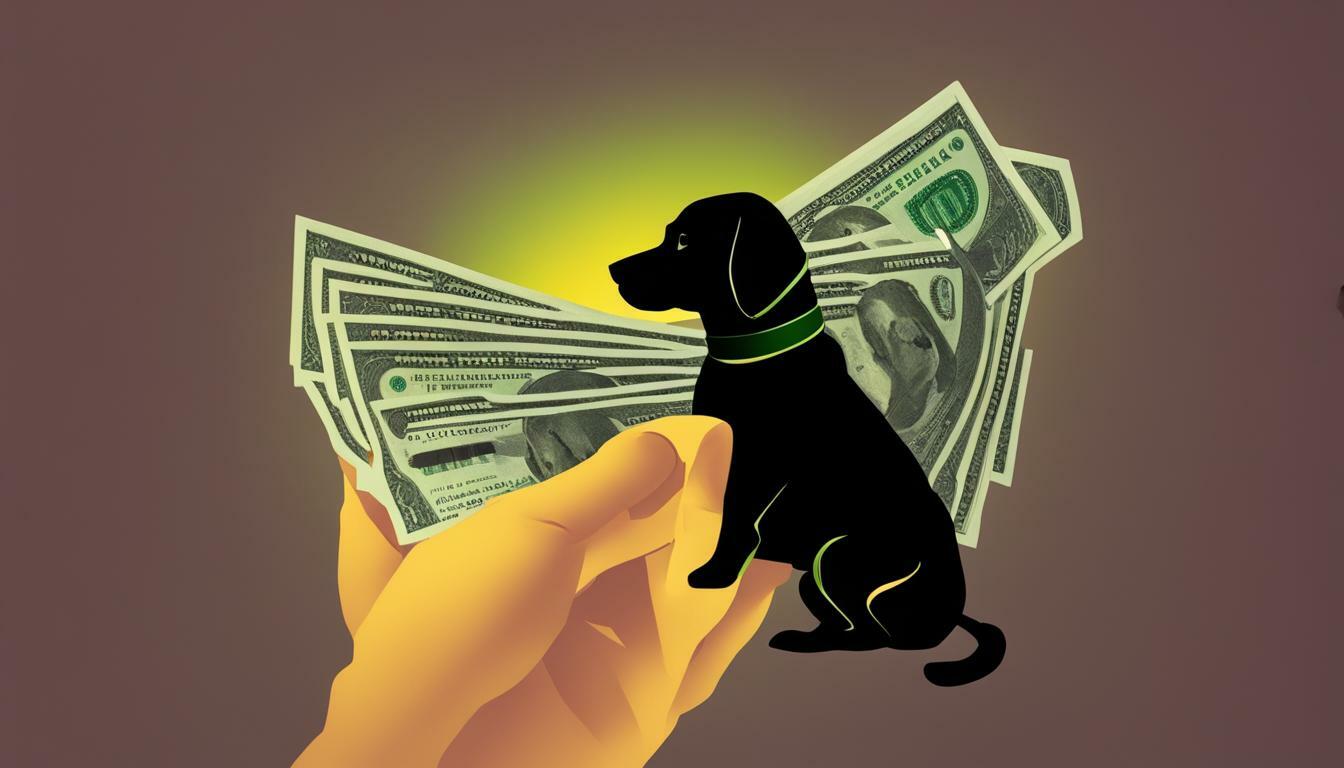Key Takeaways
- Obedience and socialization are crucial for a well-trained pheasant hunting dog.
- Building confidence and desire in the dog’s pursuit of pheasants is essential.
- Key qualities of a pheasant dog include drive, perseverance, compliancy, mental stability, cooperation, and desire.
- Training methods like exposure to pen-raised pheasants, quartering drills, and teaching the dog to “hunt dead” can enhance efficiency.
- Enhancing the dog’s natural instincts and fostering a strong bond with the hunter are vital aspects of successful training.
Importance of Obedience and Socialization
Obedience and socialization are foundational elements for training a dog to hunt pheasants efficiently. Teaching your dog to be obedient ensures they will listen and respond to your commands, even in distracting hunting environments. Socialization, on the other hand, helps your dog become comfortable around other dogs, people, and different hunting scenarios.
When it comes to obedience, consistency is key. Starting from a young age, establish a set of basic commands such as sit, stay, and come. Use positive reinforcement techniques, like treats and praise, to reward your dog when they follow your commands correctly. Gradually introduce distractions to test their obedience, and reinforce training as necessary.
Socialization is just as important as obedience. Expose your dog to various environments and introduce them to new experiences regularly. This can include encounters with other dogs, different terrain, and simulated hunting situations. By doing so, your dog will become accustomed to different sights and sounds, reducing anxiety and increasing their overall confidence in the field.
Key Tips for Obedience and Socialization Training:
- Start training from a young age, using positive reinforcement techniques.
- Practice commands in different environments to ensure obedience in various hunting situations.
- Expose your dog to different social situations, including encounters with other dogs and people.
- Gradually increase the difficulty of training and socialization exercises to build confidence and adaptability.
Remember, a well-trained and socialized dog is more likely to be focused, obedient, and efficient when hunting for pheasants. By investing time and effort into obedience and socialization training, you will lay a solid foundation for your dog’s future success in the field.
| Key Benefits of Obedience and Socialization | Practical Tips for Training a Dog to Hunt Pheasants |
|---|---|
| Improved responsiveness to commands | Start training from a young age and use positive reinforcement techniques |
| Reduced anxiety and increased confidence | Expose your dog to different environments and social situations |
| Enhanced adaptability in hunting scenarios | Gradually increase the difficulty of training exercises |
Building Confidence and Desire
Building a dog’s confidence and desire is crucial for successful pheasant hunting adventures. To achieve this, it is important to expose the dog to pheasants in various environments. Gradually introduce the dog to different locations, such as fields, woods, and wetlands, where pheasants are commonly found. This exposure helps the dog become comfortable and familiar with different hunting terrains, increasing their confidence and desire to search for pheasants.
During training sessions, use positive reinforcement techniques to reward the dog for displaying desirable behaviors, such as using their nose to locate and track scents. This reinforcement helps build a positive association between finding pheasants and receiving rewards, encouraging the dog to continue their hunting efforts with enthusiasm.
Additionally, incorporating quartering drills into training can enhance a dog’s hunting skills. Quartering refers to the dog’s ability to search an area in a zigzag pattern, covering ground efficiently. Use commands and hand signals to guide the dog during quartering drills, encouraging them to explore the area thoroughly while maintaining focus on locating pheasants.
Remember, every dog is unique, so it is essential to adapt training techniques to suit their individual personality, energy level, and learning style. By building a dog’s confidence and desire, you lay the foundation for a successful pheasant hunting partnership.
| Training Techniques for Building Confidence and Desire: |
|---|
| Expose the dog to pheasants in various environments |
| Use positive reinforcement to reward desirable behaviors |
| Incorporate quartering drills to enhance hunting skills |
| Adapt training techniques to suit the dog’s personality and learning style |
Key Qualities of a Pheasant Dog
A successful pheasant hunting dog possesses specific key qualities that contribute to their effectiveness in the field. These qualities include drive, perseverance, compliancy, mental stability, cooperation, and an inherent desire for bird hunting. Each of these attributes plays a vital role in training a dog to hunt pheasants efficiently and successfully.
Drive and Perseverance
Having a dog with a strong drive for bird hunting is essential. The dog should possess an innate desire to search for, chase, and retrieve pheasants. Alongside drive, perseverance is crucial. Pheasant hunting can be challenging, and a dog needs to continue searching, even in difficult conditions or when encountering obstacles.
Compliancy and Mental Stability
A pheasant dog must be compliant and responsive to commands. Obedience is critical for safety in the field and allows the hunter to have control over the dog’s actions. Additionally, mental stability is vital to keep the dog calm and focused, even in high-pressure situations or when facing distractions.
Cooperation and Desire
Cooperation between the hunter and the dog is vital for successful pheasant hunting. The dog should understand and respond to the hunter’s cues, working harmoniously as a team. Furthermore, a strong desire to hunt pheasants is fundamental. This desire drives the dog’s motivation and enthusiasm for the task, resulting in more efficient and effective hunting.
Training Methods to Cultivate These Qualities
To cultivate these key qualities in a pheasant dog, specific training methods prove effective. Mass exposure to pen-raised pheasants helps build confidence and familiarity with the birds. Quartering drills teach the dog to cover a designated search area systematically. Teaching the dog to “hunt dead” enhances their retrieving skills and helps them locate downed pheasants.
| Key Qualities | Explanation |
|---|---|
| Drive and Perseverance | Strong desire to hunt pheasants and the ability to continue searching despite challenges. |
| Compliancy and Mental Stability | Being obedient and responsive to commands while maintaining a calm and focused mindset. |
| Cooperation and Desire | Working harmoniously with the hunter and having a strong motivation to hunt pheasants. |
By incorporating these training methods and focusing on enhancing a dog’s natural instincts, hunters can develop a pheasant dog that excels in the field. Establishing a strong bond of trust and cooperation between the hunter and the dog further enhances the dog’s performance, resulting in more successful pheasant hunting outings.
Training Methods for Efficient Pheasant Hunting
Utilizing effective training methods can significantly improve a dog’s performance in pheasant hunting. To ensure your dog is well-prepared and capable of finding pheasants efficiently, consider incorporating the following techniques into your training program.
Mass Exposure to Pen-Raised Pheasants
One highly effective method is to expose your dog to pen-raised pheasants in controlled environments. This allows the dog to become familiar with the scent, sight, and behavior of pheasants, building their confidence and desire to hunt. Gradually increase the exposure as the dog becomes comfortable, challenging them to locate and flush the birds on their own. This method helps develop the dog’s ability to search for and track pheasants effectively.
Quartering Drills
Another valuable training technique is practicing quartering drills. This involves teaching your dog to systematically search an area for pheasants in a zigzag pattern. Train your dog to work at a distance from you, covering the designated area thoroughly. By using verbal cues and hand signals, you can guide your dog’s movements and help them locate hidden birds. Consistent practice of quartering drills enhances your dog’s efficiency in searching for pheasants and improves their overall hunting performance.
Teaching the Dog to “Hunt Dead”
Teaching your dog to “hunt dead” is essential for efficient pheasant hunting. This involves training your dog to retrieve downed birds without disturbing the surrounding area. Start by introducing the concept of retrieving and gradually increase the difficulty level by using scent-drenched dummies. As your dog becomes proficient, incorporate more realistic scenarios with actual pheasants. This training method ensures that your dog can locate and retrieve birds swiftly and quietly, preventing the loss of wounded game.
By incorporating these effective training methods into your pheasant hunting program, you can enhance your dog’s skills and maximize their potential in the field. Remember to be patient, consistent, and positive in your training approach, as this will help foster a strong bond and trust between you and your dog. With the right techniques and diligent practice, you and your well-trained dog can enjoy successful and fulfilling pheasant hunting adventures together.
Enhancing Natural Instincts
Training should focus on harnessing a dog’s natural instincts for successful pheasant hunting. By understanding and nurturing these inherent abilities, hunters can maximize their dog’s potential in the field. One effective technique is utilizing mass exposure to pen-raised pheasants. This method allows the dog to become familiar with the scent, sight, and behavior of pheasants, creating a strong foundation for hunting skills.
In addition, quartering drills can be employed to teach the dog to systematically cover the ground in search of game. This exercise encourages the dog to use its natural instincts to locate and flush out pheasants. It also helps the dog develop the necessary stamina and discipline for prolonged hunting trips.
Another essential skill to teach a pheasant hunting dog is the ability to “hunt dead.” This refers to the dog’s aptitude for finding and retrieving downed birds. By training the dog to recognize and locate motionless pheasants, hunters can significantly increase their success rate. Using positive reinforcement techniques, such as treats or praise, can help reinforce this behavior and encourage the dog’s desire to retrieve.
Finding the Perfect Balance
When enhancing a dog’s natural instincts, it is crucial to strike a balance between training and preserving the dog’s inherent abilities. Overtraining can lead to confusion and could hinder the dog’s natural hunting skills. By fostering a positive training environment and allowing the dog’s instincts to guide its actions, hunters can create a well-rounded and efficient pheasant hunting companion.
| Training Technique | Description |
|---|---|
| Mass exposure to pen-raised pheasants | Allows the dog to become familiar with pheasant scent, sight, and behavior. |
| Quartering drills | Teaches the dog to systematically cover the ground in search of game. |
| Teaching the dog to “hunt dead” | Develops the dog’s ability to find and retrieve downed birds. |
The Bond Between Hunter and Dog
A trusting bond between the hunter and the dog is vital for effective pheasant hunting. The success of any hunting trip depends greatly on the mutual understanding, trust, and cooperation between the hunter and their four-legged companion. Building and nurturing this bond takes time and consistent training efforts.
One way to strengthen the bond is through regular training sessions that focus not only on obedience and hunting skills but also on creating a positive and enjoyable experience for both the hunter and the dog. This can be achieved by incorporating fun activities such as retrieving games, scent training exercises, and obstacle courses into the training routine.
Additionally, spending quality time together outside of training sessions is essential. Taking your dog for regular walks, allowing them to explore new environments, and engaging in playtime helps to solidify the bond and deepen the level of trust between you. Remember, your dog needs to see you as a reliable and caring leader, someone they can rely on in the field.
| Key Tips for Strengthening the Bond: |
|---|
| 1. Patience and consistency are key – take the time to understand your dog’s needs and tailor your training approach accordingly. |
| 2. Use positive reinforcement techniques, such as treats, praise, and rewards, to motivate and encourage your dog during training sessions. |
| 3. Communicate effectively with your dog through clear commands, gestures, and body language. |
| 4. Create a harmonious and peaceful training environment free from distractions that may hinder your dog’s focus and concentration. |
By investing time and effort into developing a strong bond with your dog, you will not only enhance the effectiveness of your pheasant hunting expeditions but also foster a deep and meaningful connection that will make every hunting experience a rewarding one for both of you.
Putting It All Together
By combining the training techniques and principles discussed throughout this article, you can develop a well-rounded pheasant hunting dog. It starts with establishing unwavering obedience and socialization from a young age. Teaching your dog basic commands and exposing them to different social settings will lay the foundation for a successful hunting partnership.
Building confidence and desire in your dog is crucial for efficient pheasant hunting. Regularly exposing your dog to live pheasants in various environments will help them develop a passion for the hunt. Encouraging their natural instincts and desire to hunt will ensure they remain focused and motivated in the field.
Remember, a pheasant dog should possess key qualities such as drive, perseverance, and mental stability. They should be compliant and cooperative, working harmoniously with their hunter. Training methods like mass exposure to pen-raised pheasants, quartering drills, and teaching the dog to “hunt dead” will enhance their efficiency in locating and retrieving birds.
A strong bond between the hunter and the dog is the final ingredient for a successful hunting experience. Trust and cooperation are essential for effective communication and teamwork. By nurturing this bond through consistent training, you will forge a partnership built on mutual understanding and shared goals.
| Training Technique | Description |
|---|---|
| Unwavering Obedience | Teach your dog basic commands and ensure they respond promptly in various settings. |
| Socialization | Expose your dog to different environments and introduce them to various people and animals. |
| Building Confidence | Regularly expose your dog to live pheasants in different locations to boost their confidence. |
| Enhancing Natural Instincts | Tap into your dog’s inherent abilities and instincts by allowing them to use their senses and develop their hunting skills. |
| Teaching Key Skills | Train your dog to quarter, retrieve birds, and “hunt dead” to maximize their efficiency in the field. |
By following these training tips and methods, you will be well on your way to training a dog that excels at pheasant hunting. Remember to be patient, consistent, and always reinforce positive behavior. Happy hunting!
Conclusion
Training a dog to hunt pheasants requires dedication, patience, and a commitment to building a strong partnership between the hunter and the dog. In order to master this skill, it is crucial to start with unwavering obedience and socialization from a young age. By establishing a solid foundation, the dog will develop the necessary skills to excel in the field.
Exposing the dog to pheasants in various environments is key to building confidence and desire. This can be achieved through controlled introductions and gradually increasing exposure. By stimulating the dog’s natural instincts and desire to hunt, they will become more effective at locating and retrieving pheasants.
When selecting a dog for pheasant hunting, it is important to consider key qualities such as drive, perseverance, compliancy, mental stability, cooperation, and desire. These traits will contribute to the dog’s success in the field and their ability to work harmoniously with the hunter.
There are various training methods that can enhance a dog’s efficiency and effectiveness in finding pheasants. Techniques such as mass exposure to pen-raised pheasants, quartering drills, and teaching the dog to “hunt dead” can improve their hunting skills. It is also crucial to tap into the dog’s natural instincts and enhance their abilities through targeted training practices.
In conclusion, successful pheasant hunting with a well-trained dog is the result of consistent training, patience, and a strong bond between the hunter and the dog. By following the steps and techniques outlined in this article, aspiring pheasant hunters can set themselves and their dogs up for a rewarding and efficient hunting experience.
FAQ
Q: What are the key qualities of a pheasant dog?
A: Key qualities of a pheasant dog include drive, perseverance, compliancy, mental stability, cooperation, and desire.
Q: How can I train my dog to hunt pheasants efficiently?
A: Training methods such as mass exposure to pen-raised pheasants, quartering drills, and teaching the dog to “hunt dead” can improve efficiency and effectiveness in finding pheasants.
Q: Why is obedience and socialization important in pheasant dog training?
A: Establishing unwavering obedience and socialization from a young age helps create a well-trained and well-behaved dog, which is crucial for successful pheasant hunting.
Q: How can I build confidence and desire in my pheasant dog?
A: Exposing the dog to pheasants in various environments and enhancing their natural instincts through training techniques can help build confidence and desire for pheasant hunting.
Q: What is the importance of the bond between the hunter and the dog?
A: Building a strong bond based on trust and cooperation can enhance the dog’s performance in the field and create a more successful hunting partnership.
Q: What are some effective training methods for pheasant hunting?
A: Effective training methods include mass exposure to pen-raised pheasants, quartering drills, teaching the dog to “hunt dead,” and enhancing the dog’s natural instincts.
Q: How can I enhance my dog’s natural instincts for pheasant hunting?
A: Strategies such as tapping into the dog’s inherent abilities, using scent training, and providing opportunities for instinctual behaviors can enhance their natural instincts for pheasant hunting.
Q: How important is it to start training from a young age?
A: Starting training from a young age is crucial for establishing obedience, socialization, and building a strong foundation for pheasant hunting training.
Q: What is the significance of mental stability in a pheasant dog?
A: Mental stability is important in a pheasant dog as it helps them stay focused, calm, and reliable in different hunting situations.
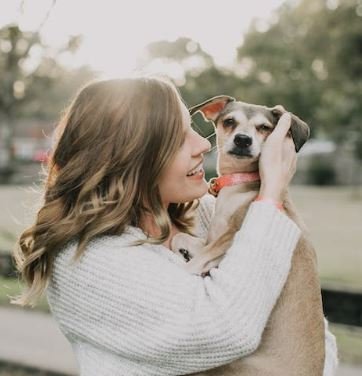
Marissa Delotta, 36, from Dayton, Ohio, is the creative force behind Roverboard.com, a beloved online destination for dog lovers. As a dedicated mom and canine enthusiast, Marissa combines her family experiences with her love for dogs to offer a platform where dog owners can exchange tips, heartwarming stories, and advice. Her website has become a vibrant community for sharing the joys of dog parenting. In her free time, Marissa enjoys exploring dog parks with her family and volunteering at local animal shelters.
